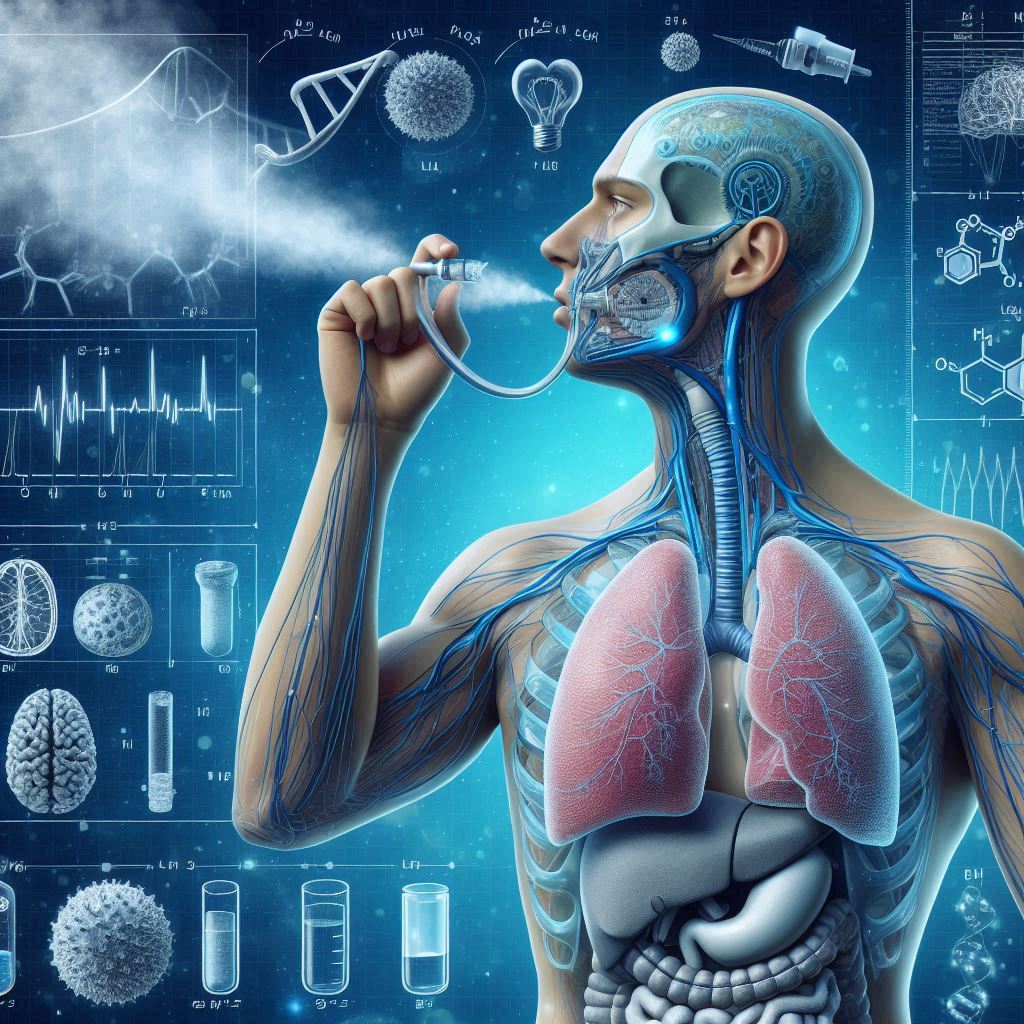Asexual Reproduction
- Asexual reproduction is the process resulting in the production of genetically identical offspring
Examples include:
- Binary Fission (amoeba/bacteria)
- Budding (sponges/anemones)
- Spore Formation (ferns/mosses/fungi)
| Advantages | Disadvantages | |
| to a population of species in the wild |
|
|
| to crop plants |
|
|
Sexual Reproduction
- Sexual reproduction is a process involving the fusion of the nuclei of two gametes (haploid) to form a zygote (diploid) and the production of offspring that are genetically different from each other
- Fertilisation is the fusion of gamete nuclei
| Advantages | Disadvantages | |
| to a population of species in the wild |
|
|
| to crop plants |
|
|
Reproduction in Flowering Plants
Parts of a Flower
- Sepal: protects flower in bud form
- Petal: attracts insects
- Stigma: collects pollen grain
- Ovary: produces female gamete
- Ovule: inside the ovary; has female gamete
- Anther: produces and releases pollen which has male gamete

Insect and Wind Pollinated Flowers
| Insect Pollinated Flower | Wind Pollinated Flower |
| Large and bright petals to attract insects | Dull and drab petals, often green/brown |
| Nectar guides draw insect to nectar | No nectar or scent |
| Lower number of pollen grain produced as there is a high rate of successful pollination | High number of pollen grain produced as there is a low rate of successful pollination |
| Large, sticky and thorny pollen grains to attach to insects to be carried away | Smooth, small and light pollen grains so they are easily blown away with wind |
| Anthers are inside flower, stiff and firmly attached so that insects brush against them | Anthers are outside flower, swinging lose on long filaments for easy pollen release |
| Stigma is inside flower, sticky so pollen grain sticks to it when insects brush past | Stigma is outside flower, feathery to catch drifting pollen grain |
Pollination
- Pollination is the transfer of pollen grains from the anther to the stigma
- Self-pollination as the transfer of pollen grains from the anther of a flower to the stigma of the same flower or different flower on the same plant
- Cross-pollination as transfer of pollen grains from the anther of a flower to the stigma of a flower on a different plant of the same species
- Cross-pollination improves genetic variation as there are 2 parent plants
- Lack of variation is bad as the offspring may not survive in different conditions
- Insect pollination relies of a vector, whereas wind pollination relies on the wind only.
Fertilisation
- Fertilisation occurs when a pollen nucleus fuses with a nucleus in an ovule
- The male gamete in the pollen germinates and forms a pollen tube from the stigma through the style. It then makes its way through the pollen tube and enters through a gap in the ovule called the micropyle
- Once the male gamete reaches the end of the pollen tube the end disintegrates and then the male gamete enters inside. Then the 2 gametes will fuse together and end up forming a zygote
- The zygote divides via mitosis and forms the embryo. The ovule swells up to form the seed seed. The integument of the ovule becomes hard and dry to form the testa. Water ends up being withdrawn from the seed making it dormant. The ovule became the seed and the ovary becomes 2 parts – radicle and tubule. The radicle ends up becoming the root and the tubule becomes the chute. The cotyledon is formed out of starch and amino acids to act as a food source. The micropyle becomes the hilum.
Factors Affecting Germination of the Seed
- Germination is the start of growth in the seed
- The factors that affect this are:
- Water – allows seed to swell up and the enzymes in the embryo to start working so that growth can occur. The starch and protein cotyledon are digested by enzymes to form glucose and amino acids suitable for the seeds nutrient need. Vacuoles expand allowing the root and chute to grow. Turgor pressure is maintained in the cells.
- Oxygen – Early stages of germination is anaerobic. When the testa splits open, oxygen is allowed to permeate through and aerobic respiration occurs.
- Warmth – germination improves as temperature rises (till the optimum point) as the reactions which take place are controlled by enzymes. Ideal temperature varies depending on the seed itself.
Sexual Reproduction in Humans
Sex Cells and Fertilisation
Fertilisation is the fusion of the nuclei from a male gamete (sperm cell) and a female gamete (egg cell).

| Sperm | Egg |
| Very small | Large |
| Flagellum | No flagellum |
| Can move | Can’t move |
| Produced daily in large numbers after puberty | Present from birth, one matures and is released each cycle after puberty |
| Gamete | Feature | Reason |
| Sperm | Flagellum (tail) | Enables it to swim to the egg |
| Enzymes in head (acrosome) | To digest jelly coat and cell membrane of egg | |
| Many mitochondria | Provides energy for locomotion | |
| Egg | Cytoplasm with energy store | Provides energy for dividing zygote after fertilisation |
| Jelly coat that changes after fertilisation | Forms an impenetrable barrier after fertilisation to prevent other sperm nuclei entering the cell |
Male Reproductive System

- Testis: produces sperm and testosterone
- Scrotum: sac supporting testes, to ensure sperm is kept at a tempereature slightly lower than the body’s
- Epididymis: stores sperm
- Sperm Duct: pathway of the sperm in which it mixes with seminal fluid
- Seminal Vesicle: produces seminal fluid to help sperm swim (fluid + sperm = semen)
- Prostate Gland: secretes an alkaline fluid to help sperm swim and to neutralise acid in vagina
- Urethra: carries semen and has a muscle that prevents semen mixing with urine
- Penis: allows semen to pass into the vagina of a woman during intercourse
Female Reproductive System

- Ovary: contains egg which will mature and develop when hormones are released; produces oestrogen and progesterone.
- Oviduct: egg moves through this by cilia (present on the lining) movement and peristalsis; fertilisation occurs here
- Uterus: muscular bag with soft lining where the zygote will be implanted into the endometrial lining to develop into a foetus
- Cervix: ring of muscle below uterus to keep the baby in place during pregnancy
- Vagina: sperm deposited here; muscular tube that leads to the inside of the woman’s body. Passageway for exit of menstrual blood. Passage for exit of foetus during labour.
Sex Hormones in Humans
Puberty
Hormonal changes in humans:
- Testosterone in males
- Oestrogen in females
Gonads are the reproductive structures (testes and ovaries) in which hormones are produced and are the hormone’s target organs.
| Males | Females |
| Sperm produced (main characteristic) | Maturation of egg (main characteristic) |
| Growth of hair | |
| Development of muscles | Hips become broader as pelvis widens |
| Voice cracks as larynx changes shape | |
| Broadening of shoulders | Vagina becomes larger |
| Penis becomes larger | Breasts develop and nipples become larger |
| Scrotum expands to contain larger testes | |
| Formation of acne as skin becomes oily | Menstrual cycle begins |
The Menstrual Cycle
- 28 days long on average
- Controlled by hormones
- Ovulation (release of an egg) occurs about halfway through the cycle
- Menstruation (breaking of the uterus lining) lasts around 5-7 days and signals the start of the next cycle

Hormones Involved in the Menstrual Cycle
- Follicle Stimulating Hormone (FSH)
- produced in the pituitary gland
- stimulates 1 follicle to mature
- follicle becomes a Graafian follicle
- stimulates ovary to produce oestrogen
- Oestrogen
- stops FSH secretion (so only 1 egg matures)
- stimulates pituitary gland to produce LH
- stimulates repair in lining of uterus
- Luteinising Hormone (LH)
- stimulates ovulation
- stimulates formation of the corpus luteum
- Progesterone
- released by corpus luteum
- prepares uterus for pregnancy and implantation
- prevents FSH and LH secretion so another egg doesn’t mature
- Ovulation occurs once the follicle matures and oestrogen level is at its peak
- If the egg isn’t fertilised the corpus luteum breaks down and progesterone level falls
- If pregnancy occurs progesterone production continues until the placenta is developed, preventing the uterus lining from breaking down and aborting the pregnancy

Growth and Development of the Foetus
Growth and Development
In early development, the zygote divides by mitosis to form the embryo, which will implant into the wall of the uterus. The gestation period is 9 months. In the first 12 weeks, development of the organs occur and after that, the foetus grows in size.

The Foetus in the Uterus
- Amniotic Sac: membrane made out of mother’s blood plasma, that encloses the amniotic fluid
- Amniotic Fluid: protects the foetus against mechanical shocks and prevents it from drying out and prevents temperature fluctuations
- Umbilical Cord: connects mother to the foetus and contains blood vessels for transfer of materials
The Placenta
The placenta has several important functions in during the gestation period:
- Involved in the exchange of nutrients (like glucose) from the mother to the baby
- Involved in the exchange of wastes (like CO2 and urea) from the baby to the mother
- Protection to the foetus is provided by the mother’s immune systems
- Protects against dangerous fluctuations in the mother’s blood pressure
- Secretes progesterone to maintain uterus lining (corpus luteum breaks down by 3rd month)
The placenta also develops finger-like projections called villi, which extend into the wall of the uterus. This increases the surface area for diffusion of wastes and nutrients.
There is no direct contact between maternal and foetal blood as their blood groups may be different. This also makes sure that pathogens do not reach the baby.
Some toxins (nicotine) and pathogens (HIV and Rubella virus) are small enough to pass across the placenta and reach the foetus.

There are 2 blood vessels in the umbilical cord:
- Umbilical artery: carries deoxygenated blood and wastes away from the foetus to the placenta
- Umbilical vein: carries oxygenated blood and nutrients to the foetus from the placenta
Towards the end of pregnancy, even antibodies cross the placenta so that the baby has immunity to certain diseases. This is an example of passive immunity.
Antenatal Care and Labour
Antenatal Care
Antenatal care is the care provided during the pregnancy period.
Dietary needs include:
- Sufficient proteins
- Calcium and Iron
- Folic acid (prevents birth defects of the brain and spine)
The mother should avoid smoking as it has severe effects:
- Low birth weight
- Birth defects related to the brain, heart and lungs
The mother should avoid alcohol consumption as it has severe effects:
- Increased risk of miscarriage
- Increased risk of premature birth
- Affects brain development – leads to learning disability and behavioural problems later
Labour
The process of labour is:
- Breaking of the amniotic sac
- Contraction of the muscles in the uterus wall (stimulated by oxytocin)
- Cervix dilates (stimulated by oxytocin)
- Baby passes out through the vagina
- Umbilical cord is cut and tied (so that there is no blood loss)
- Delivery of the afterbirth (placenta)
Breast Milk vs Formula Milk
| Advantages | Disadvantages | |
| Breast Milk |
|
|
| Bottle Feeding using Formula Milk |
|
|
Methods of Birth Control
Artificial Insemination (AI)
Treats fertility by inserting semen directly into uterus close to ovulation. The sperm may be obtained by from the partner or a donor. This is done if:
- Sperms aren’t motile enough
- Male has erectile dysfunction
In Vitro Fertilisation (IVF)
Treats infertility by containing eggs and sperms outside the body within a petri dish.
- Woman is given fertility drugs
- Eggs are obtained
- Kept in a petri dish and fertilised with sperms
- Grown in an incubator
- Healthy embryos are transferred into the uterus
Methods of Birth Control
Natural:
- Abstinence: refrain from having intercourse
- Monitoring Body Temperature: body temperature rises near ovulation (not effective)
- Rhythm Method: woman keeps track of her ovulation (not effective)
- Monitoring Cervical Mucus: woman knows when mucus is thick enough to block sperm (not effective)
Barriers:
- Condom: placed on penis and prevents sperm from reaching egg (and HIV)
- Femidom: placed in vagina and prevents sperm from reaching egg (and HIV)
- Diaphragm: cervical cap that prevents sperm from reaching egg, but is usually effective when used with a spermicidal
Chemical:
- Spermicidal: kills sperm (applied on the vagina)
- Intra Uterine Device: placed in uterus, acts as a barrier and breaks down endometrium, so the embryo doesn’t get implanted and is removed from the body
- Intra Uterine System
- Contraceptive Pill: contains high levels of oestrogen and progesterone so that uterus lining is maintained and so that new egg doesn’t develop and get released
- Implant: releases progesterone which will restrict ovulation
- Injection: injects progesterone which will restrict ovulation
Surgical:
- Vasectomy: sperm duct is cut and tied so it doesn’t mix with seminal fluid
- Tubectomy: oviduct is cut and tied so the egg doesn’t reach the site of fertilisation
Social Implications of Contraception and Fertility
- Fertility treatments are very expensive
- Can lead to overpopulation
- IVF can lead to multiple pregnancies, risking life of foetus and mother
- Can cause emotional and financial loss as these can cause miscarriages
- Children born through this are prone to mental retardation, lung problems and learning disabilities
- Women are obtaining professional degrees so they can focus on their work
Sexually Transmitted Infections (STI)
STIs
- STIs are infections that are transmitted via body fluid through sexual contact
- Human Immunodeficiency Virus (HIV) is an STI
Methods of Transmission
Transmitted through body fluids, especially semen:
- Unprotected sex
- Sharing needles
- Unsterilised surgical instruments
- Blood transfusion
- From infected mother to foetus via blood or milk
HIV
Viruses attack some types of lymphocytes; hence the number of lymphocytes are reduced and therefore there is a reduced ability to produce antibodies. HIV can cause AIDS.
Treatment
- Condoms
- Screen blood before transfusion
- Sterilised needles and surgical instruments
- Feed baby with formula milk (if mother has AIDS)






